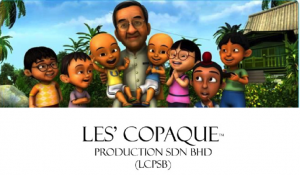Written by Anis Adrina Md Nor
The rapid development of technologies and Internet has made the world become borderless as everyone can have the access to the virtual world. This situation enables people to access countless information online and this has offered challenges to news industry as they are now have to compete with online news media in order to disseminate information.
As more people are now preferring online medium as the source to get information, news industry is now trying to establish their new form of news products from paper form to digital form in which they also publish news in online platform as to fulfil the demand for the content through online. The digitization of media contents are now transforming the way media products are consumed and produced.
If we look at few years back in newspaper industry, the traditional form of newspaper is the one that is printed on the papers, portable and must be purchased from stores or subscribed to newspaper delivery in order to read about things that is happening in local and also international. Things that happen today can be read in the newspaper on the next day.
However, today, we are living in the era of Internet where news is also being digitalized. Nowadays, people can read news through online websites whether from mainstream media or alternative media. They don’t have to wait until tomorrow morning to get newspaper in order to update about certain issues. Many newspaper organisations have now decided to widen their presence in ‘online world’ so that they can reach wider audiences due to the broad influence of Internet.
One advantage of the Internet to news organisations is that it allows online newspapers to operate and it is easy to join as it does not require. On the other hand, Internet and presence of online news websites is also changes the way newspapers are distributed or circulated where it is now become available online and people does not have to buy the physical newspaper to get news.
In Malaysia, we can see that there are a lot of Malaysian newspapers which are also published as online news in their own websites. For instance, The Star online, The Sun Online, Utusan online, Berita Harian online, Metro online, Kosmo! online, Sinar Harian online and News Straits Times online and many more including alternative media that are only operating online news through website such as Malaysia Kini and Malaysian Insider (recently has been banned by Malaysian government).

Although the transformation of conventional media into digital media is seen as positive move which allows people to have instant updates about current issues and events that is happening around the world, it also has given challenges to newspaper circulation. Since the acceptance of Internet and introduction of online news platform, circulation of print newspaper in Malaysia has dropped.
If you look at Audit Bureau of Circulation Malaysia, you can see that circulation of print newspaper in Malaysia has been dropping for few years. For instances, the circulation results from period July to December for three years, 2014, 2015 and 2016 shows the decrease in daily circulation of both Malay and English newspaper.
One example of the decrease of newspaper is Berita Harian newspaper where in July to December 2014, it is reported that the circulation of the newspaper was 109, 088 copies, then 106, 754 copies in the same period for 2015 and it continues to drop to 91, 229 copies daily in 2016 during the same period.
Not only that, Kosmo! newspaper also experienced the same trend of decreasing circulation from 199, 795 in July to December 2014, to 187, 967 in the same period for 2015 and continues to drop to 163, 147 copies in 2016.
English newspapers are also experiencing the dropping of newspaper circulation daily. A s an example, New Straits Times, during the period of July to December 2014, it recorded 68, 812 copies, then, 62, 113 copies during the same period in 2015 while 54, 490 copies during the same period in 2016.
Actually, there are many more dropping in other newspaper circulation which can be accessed in Audit Bureau of Circulation Malaysia website. From these decreasing trend in newspaper circulation, one of the factor that has been seen as contributing to it is the emergence of Internet and the existence of online platform for news. This may be because of online news portal has provided the easier platform for the readers that may not have the time to read the printed newspaper during the daytime or at certain location such as offices.
The transformation of news industry that has been brought by Internet may be good and also bad to the industry itself. However, whether it could ‘kill’ the conventional newspaper, it depends on how people consume the news itself.
For now, there are a lot of people that still prefer to read news from printed newspapers also they already update themselves with the current issues through online. This is one factor that could ensure the survival of print newspaper.



